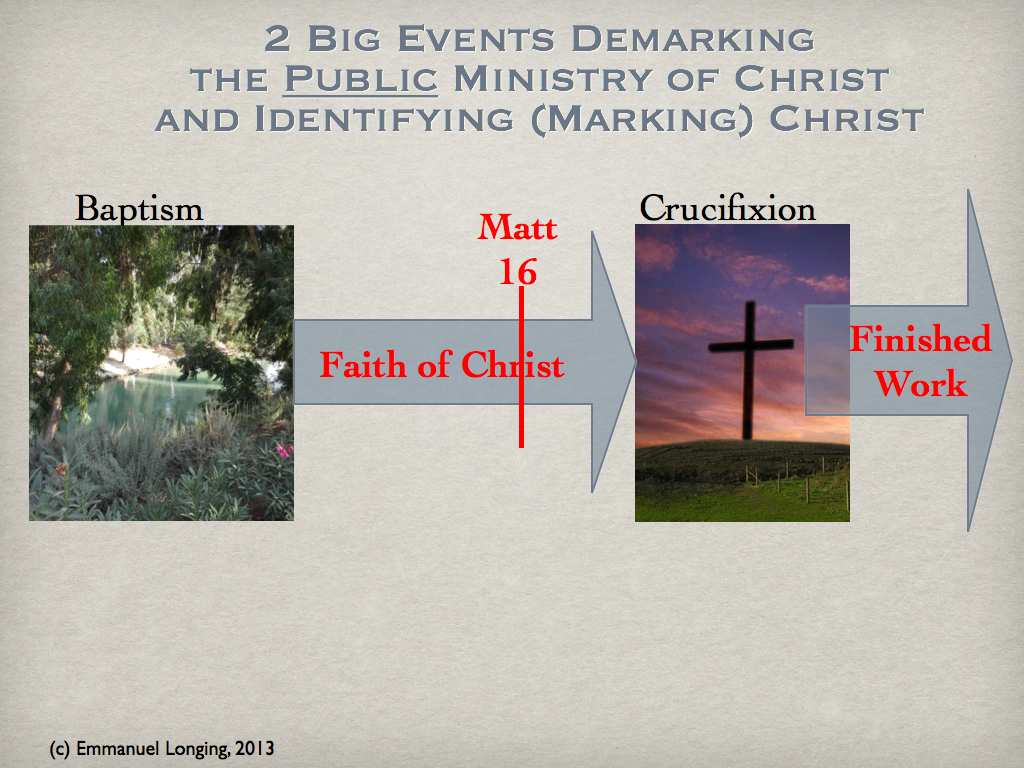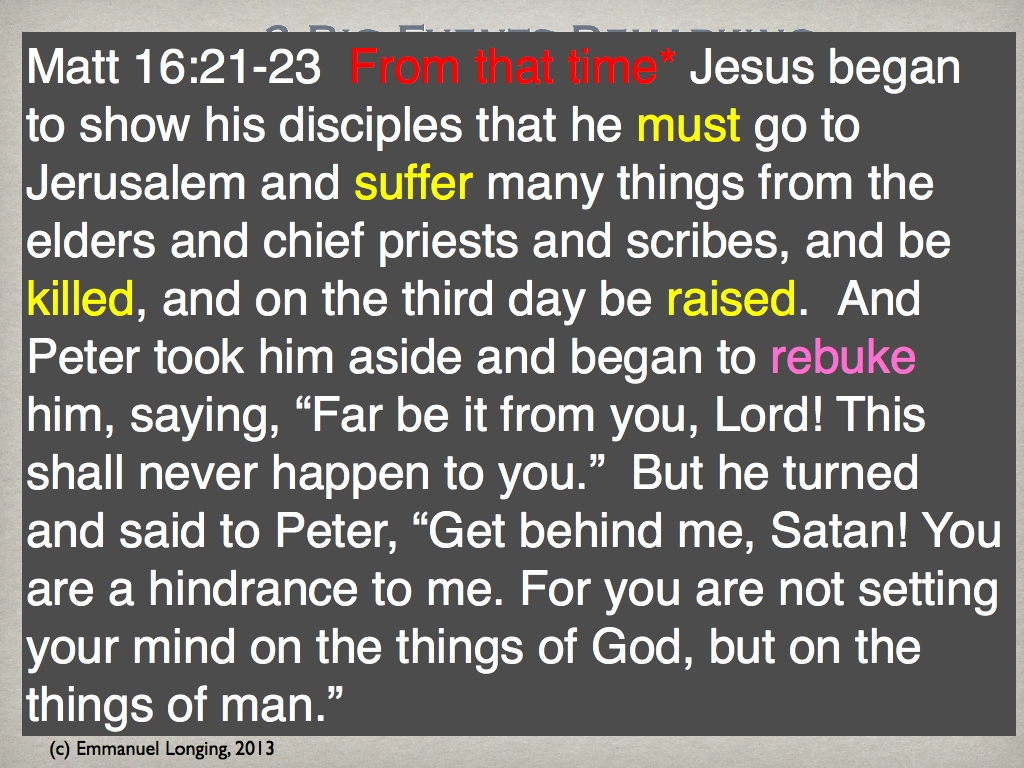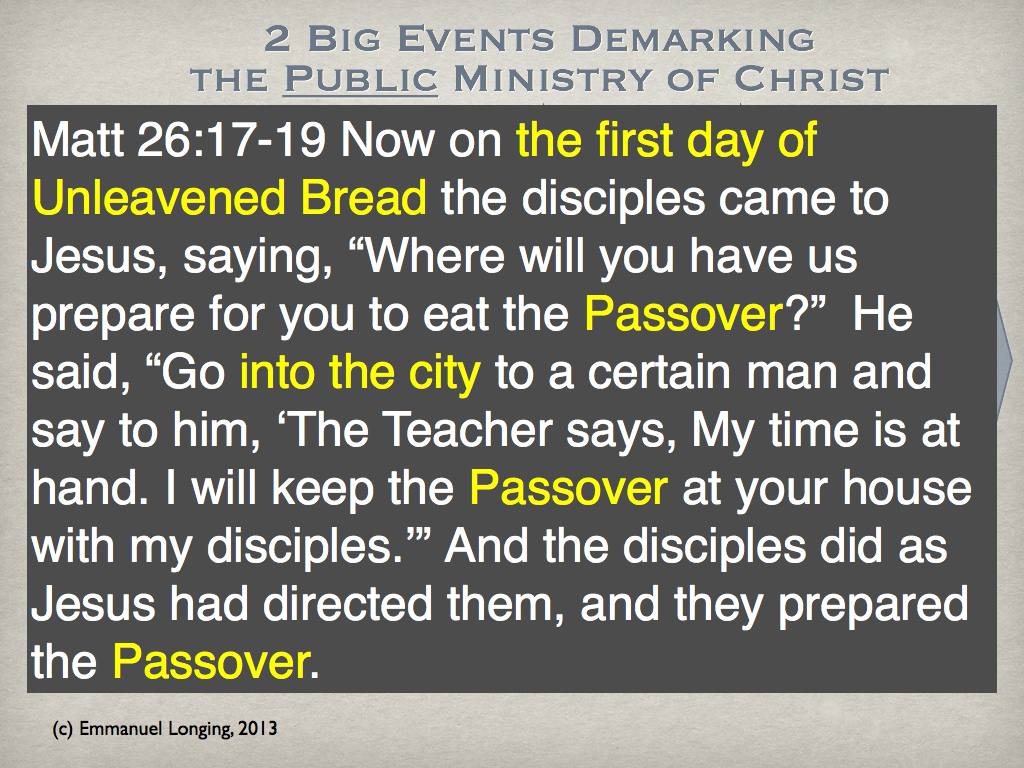Previously we introduced Christ, as He is introduced in the Gospel record, as the Lamb of God upon the baptism (identification) that takes place with John the Baptist. Even earlier we sought to clearly affirm that an essential teaching of God is that His essential nature is Faithfulness. When He gives His Word, it is a Promise toward which He is utterly and unstoppably Faithful. It may not always seem thus to us, either because there seems to us to be an unreasonable delay (though God is never late), or that His fulfillment is not in the form we were thinking it would be.
Below is a portrayal of the Faithfulness of Christ to His calling as the Lamb of God, and its fulfillment at the Cross, with wonderful and everlasting consequences which extend in time from then even until this very moment and will extend timelessly into eternity. Let us now consider a series of messages recorded in the Gospel of Matthew, beginning in Chapter 16, that lay out a progression of learnings for the disciples, and us, in the final days before God’s judgement on Christ on the Cross.
Let us now consider a series of messages recorded in the Gospel of Matthew, beginning in Chapter 16, that lay out a progression of learnings for the disciples, and us, in the final days before God’s judgement on Christ on the Cross.
Jesus connects the upcoming Passover celebration with His very own life, echoing the foretelling by John the Baptist that Christ was the very Lamb of God. Recall that at the very first Passover, it was the lifeblood of the innocent lamb which was used by the household’s father to spare the life of the first born son on that final, fateful night imprisoned in Egypt; now in Matthew , it was just days until the Heavenly Father was going to do the same with the Lamb Christ on behalf of the Father’s first born sons, Israel.Then in Matt 16:21-23 Jesus foretells that the source of His execution will be the Jewish leadership. The very ones who held themselves as the gatekeepers to the door to God would initiate killing the very God made manifest. In response, the Apostle Peter in an utter foolish act, rebukes (rebukes!) the Lord Jesus Christ. And even more astonishing, Jesus ascribes the words coming out of Peter’s mouth as having the Devil himself as their author and source.
Immediately after Christ’s baptism, He was led by the Spirit into the wilderness to undergo a 40 day period of fasting and testing. At the end of that time, the Devil appears to Him (in some way) and tempted Him in three different ways. adtwe failing in such temptation of Jesus, the Scripture says that the Devil left until a more opportune time. In the chronology of our study, that opportune time is now, and the temptation from the mouth of Peter himself is that Christ’s substitutionary judgment–the Atonement–as the foretold sin offering can be, and should be, avoided. Next, we see Christ ordaining the celebratory dinner held on the anniversary evening at which the Passover Lamb was slain. And this dinner will be a celebration of intimate companionship because Christ is there to die precisely so the fellowship with God is unveiled (namely, Christ Himself but without the obscuring clothing of space-time humanity) will be restored in an Edenic-like garden.
Next, we see Christ ordaining the celebratory dinner held on the anniversary evening at which the Passover Lamb was slain. And this dinner will be a celebration of intimate companionship because Christ is there to die precisely so the fellowship with God is unveiled (namely, Christ Himself but without the obscuring clothing of space-time humanity) will be restored in an Edenic-like garden. We must skip over the many important teaching which the Lord provides at the Last Supper to stay focused on our subject. Judas leaves the Upper Room to go to the Jewish leadership to betray Christ to them for 30 pieces of silver, carrying forward the fateful, poignant imagery of Christ as the Lamb purchased for the Passover sacrifice. Scripture tells us that Judas leaves the lighted Upper Room to enter the night, the utter darkness, to do his evil deed. After he is gone, Christ leads the remaining 11 disciples to a special meeting place, perhaps about a mile away, on yet another Mount, the Mount of Olives, just East of the Temple Mount and the Temple.
We must skip over the many important teaching which the Lord provides at the Last Supper to stay focused on our subject. Judas leaves the Upper Room to go to the Jewish leadership to betray Christ to them for 30 pieces of silver, carrying forward the fateful, poignant imagery of Christ as the Lamb purchased for the Passover sacrifice. Scripture tells us that Judas leaves the lighted Upper Room to enter the night, the utter darkness, to do his evil deed. After he is gone, Christ leads the remaining 11 disciples to a special meeting place, perhaps about a mile away, on yet another Mount, the Mount of Olives, just East of the Temple Mount and the Temple. Let us now turn to the closing events of the Gospels, beginning with the private time Christ spends with His disciples on the Mount of Olives.
Let us now turn to the closing events of the Gospels, beginning with the private time Christ spends with His disciples on the Mount of Olives.